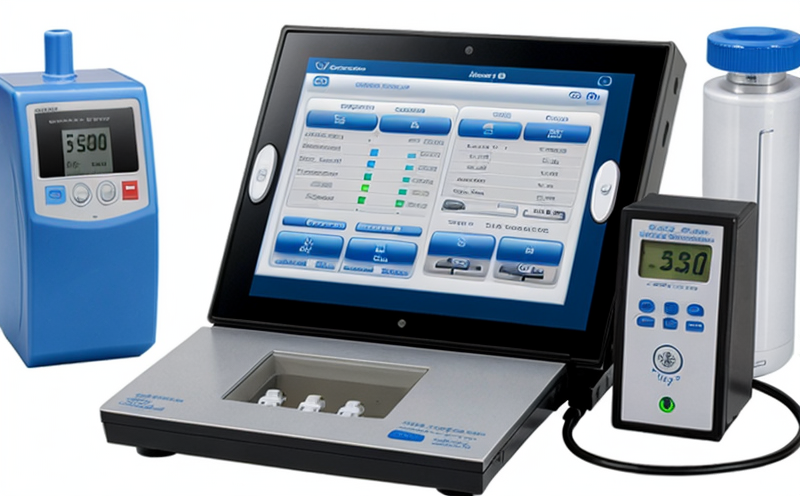ISO 11137 Radiation Sterilization Compatibility Testing Validation Method Development Test
The ISO 11137 standard is a cornerstone in ensuring the safety and compatibility of medical devices when subjected to radiation sterilization. This service focuses on validating methods for determining whether a device can withstand irradiation without compromising its functionality or integrity.
This testing process is crucial because it ensures that medical devices, such as infusion pumps and drug delivery systems, remain reliable after being exposed to high-energy radiation used in the sterilization process. Radiation sterilization is widely employed due to its efficiency and sterility assurance; however, not all materials or device components are radiation-resistant.
The ISO 11137 protocol involves several steps: selection of appropriate test samples, exposure to ionizing radiation, evaluation of post-sterilization performance, and compliance with acceptance criteria. These tests are essential for quality assurance and ensuring the safety and effectiveness of medical devices before they reach the market.
The testing begins by selecting representative specimens that reflect the materials used in the device’s construction. The specimens undergo irradiation using gamma or electron beam sources, which simulate real-world sterilization conditions. After exposure, the devices are thoroughly examined for any changes in performance parameters, including electrical conductivity, mechanical integrity, and operational stability.
One of the critical aspects of this testing is the evaluation of post-sterilization performance. This involves assessing the device’s functionality through a series of tests that mimic real-world conditions. The goal is to ensure that the device can still perform its intended function accurately after sterilization, which includes checking for leaks in drug delivery systems or ensuring that pumps operate correctly.
The acceptance criteria for this testing are stringent and align with international standards such as ISO 11137-1. These criteria include ensuring that there is no significant change in the physical or chemical properties of the device, no degradation in mechanical strength, and no alteration in electrical performance. Compliance with these criteria ensures that the medical device remains safe and effective after undergoing radiation sterilization.
The results of this testing are reported comprehensively, detailing any changes observed during the process and their implications for the device’s safety and efficacy. This detailed report is crucial for regulatory approval and internal quality assurance processes within manufacturing facilities.
- Use Cases: This testing method is particularly useful in validating the compatibility of materials used in infusion pumps, drug delivery systems, and other medical devices with radiation sterilization processes. It ensures that these devices maintain their integrity and function reliably post-sterilization.
Quality and Reliability Assurance
The ISO 11137 Radiation Sterilization Compatibility Testing Validation Method Development Test is integral to maintaining the highest standards of quality and reliability in medical device manufacturing. By ensuring that devices can withstand radiation sterilization without compromising their performance, this service helps manufacturers meet stringent regulatory requirements.
Quality assurance in medical device testing involves not only the physical and chemical properties of the materials but also the functional integrity of the device as a whole. This testing method ensures that even after exposure to high-energy radiation, the device continues to perform its intended function safely and effectively. This is particularly important for devices like infusion pumps and drug delivery systems, where reliability and accuracy are paramount.
The process involves rigorous evaluation of the device’s operational parameters before and after sterilization. This includes checking for any changes in electrical conductivity, mechanical performance, and overall functionality. Compliance with international standards such as ISO 11137-1 ensures that the testing method is reliable and consistent across different facilities.
The results of these tests are critical for both regulatory approval and internal quality control processes. Regulatory bodies like the FDA (U.S. Food and Drug Administration) and CE marking agencies rely on such tests to ensure that medical devices meet safety and efficacy standards. Internal quality assurance teams use this information to refine manufacturing processes, ensuring consistent performance across all batches of products.
By adhering to these stringent testing protocols, manufacturers can build trust with healthcare providers and patients, who depend on the reliability and safety of medical devices. This service not only enhances product quality but also streamlines compliance processes, reducing time-to-market for new products.
International Acceptance and Recognition
The ISO 11137 standard is widely recognized internationally for its comprehensive approach to radiation sterilization compatibility testing. This ensures that the results of this testing are accepted by regulatory bodies across different countries, making it a global benchmark in medical device quality assurance.
Regulatory agencies such as the FDA and European Union’s Notified Bodies recognize ISO 11137-1 as a reliable method for validating radiation sterilization processes. This international acceptance simplifies the regulatory approval process for manufacturers operating globally. Compliance with this standard can significantly reduce the time and cost associated with obtaining approvals in multiple jurisdictions.
The widespread adoption of ISO 11137 also fosters consistency in testing protocols across different laboratories, ensuring that results are comparable and reproducible. This uniformity is crucial for maintaining high standards of quality and reliability in medical device manufacturing worldwide.
Moreover, compliance with this standard enhances a manufacturer’s reputation, demonstrating a commitment to excellence in product development and quality control. This can lead to increased market confidence and better relationships with healthcare providers and patients, all of whom benefit from reliable and safe medical devices.





